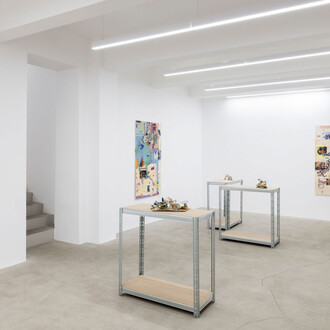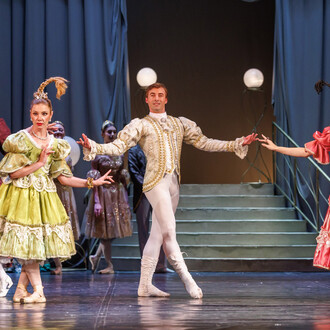Shanduko (to change/morph in Shona) is a group exhibition, curated by Richard Mudariki and devoted to four contemporary Zimbabwean visual artists: Linnet Rubaya, Franklyn Dzingai, Mostaff Muchawaya, and Wilfred Timire. The exhibition portrays the artists employing different materials and concepts in the creation of a visual way of shaking and shifting the conventional media and, at the same time, keeping a particular focus on representation, memory, and cultural identity.
"The subtle disruption of the traditional art canon by artists from Zimbabwe,” writes Richard Mudariki in the critical text of the exhibition, “has generally had a positive global reception, serving as a catalyst in drawing the world's attention to the diverse art practices in the landlocked southern African nation”. Moreover, “artists finding themselves in a stressful socioeconomic and geographic space punctuated by acute shortages, have resolved to innovate and improvise on materials, turning to alternatives, existing within their immediate environment”, Mudariki says. Interweaving and sewing, besides painting and recycled materials, are recurrent elements. The curator notes that, curiously, differently from the neighboring countries, Zimbabwe does not have a distinct national dress, even if cheap fabrics can be found easily in the local market, as in the rest of the world. Perhaps, the lack of a uniform and the strong presence of found fabrics could have been a sprint for the Zimbabwean artists toward using textiles, assigning identity and new meanings to the material.
Dzingai, Timire, and Muchawaya, living in Zimbabwe, have used in their works embroidery, fabrics, and other materials recovered in different areas. Whereas, Leeds-based Rubaya works with painting, silhouetting black figures on vibrant backgrounds. Rubaya narrates the multicultural British reality, celebrating people involved, like her, in the African diaspora. In the art of all the four artists, the main character is the human: works are often intimate portraits dedicated to the family or friends. In Muchuwaya art, the subjects come alive through the material painting, supported by heterogeneous elements. He always looks towards his native land and the farm in which he grew up, in the mountain area of Nyazura, in the East of Zimbabwe. Dzingai and Timire have shared the 2021 artHARARE Africa First art prize. The former is a mixed media artist who collages flat blocks of prints with various other picture elements extracted from newspapers, magazines, tabloids, books, and his family photo archive. While the latter mainly uses packaging materials, weaving them into tapestries, depicting everyday life situations and experiences.
In the displayed artworks, the main topics are the individual and everyday lives, discussed through diverse artistic techniques. As they are the innovators of the art scene in Zimbabwe, Timire, Tzingai, Muchawaya, and Rubaya, have reflected in an original way on their language, never forgetting the memory and roots themes. They form part of an exciting creative scene, attracting worldwide attention.
Richard Mudariki (b. 1985) after first training as an Archaeologist, devoted himself full-time to painting. He is one of the founders of ArtHARARE Contemporary art fair, a platform that brings together selected artworks presented by emerging, mid-career and established contemporary visual artists, as well as curators, artist collectives and arts organisations. This unique space aims to be a dynamic platform that is engaged in contemporary dialogue and exchange with the African and international art community.
















